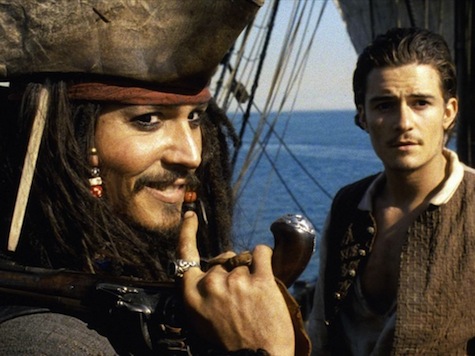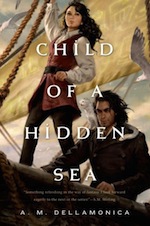So, some of us here at Tor.com have been quite clear on their boat-loathing. And while I agree with my colleague Carl Engle-Laird that boats can be deadly for fiction, I know there must be some seafaring adventures worth the Dramamine. We turned to Twitter to ask for your favorite nautical stories, and I’ve added a few of my own for this pro-boat post, in the name of summer, warm water, sandy beaches, and seafaring adventure!
20,000 Leagues Under the Sea—Jules Verne
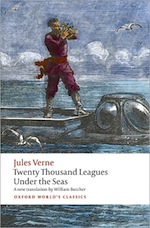
Well, nobody said the adventure would be fun. Sometimes your voyage is more of a… well, a kidnapping? And I guess when you’re being attacked by giant poulpes, the fun maybe seeps out of the boat times. But still! Nemo makes for a complex, charismatic captain, and the undersea quest is happening in the name of scientific inquiry! Plus Nemo spends a good amount of time lashing out at the Industrial Revolution, and criticizing the British Empire’s conquest of India. We get more of Nemo’s backstory in The Mysterious Island, but 20,000 Leagues is the most boat-centric of Nemo’s appearances.
Pirate Latitudes—Michael Crichton
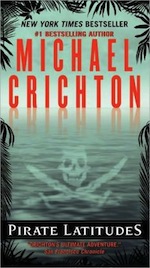
Discovered after the author’s death, Michael Crichton’s Pirate Latitudes combines pirate battles with a treasure hunt in the 17th Century! Captain Charles Hunter is hired by the Governor of Jamaica (presumably Keira Knightley’s dad) to search for the wreck of a galleon said to contain a trove of gold and jewels. Hunter’s crew has to navigate hostile ships, horrifying storms, and even the obligatory Kraken before making it back to Port Royal, where the pirates still have to overcome their greatest challenge: each other. Will the Captain prevail, or will an array of double-crosses cheat him out of his prize?
Waterworld—Kevin Reynolds, Director
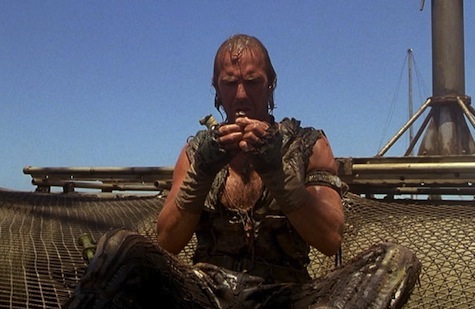
Yes, it’s ridiculous, and Dennis Hopper throws a party on the wreck of the Exxon Valdez (which for some reason still exists in the year 2500), and people called it Fishtar when it came out, and Costner drinks his own pee. All of these things are true. But there’s some cool world building happening here! The film takes the idea of a post-ice-cap civilization seriously, with humanity forgetting land-based society, and mythologizing the “Great Flood” that began all life. And I mean come on: JET SKI CHASES.
The Liveship Traders—Robin Hobb
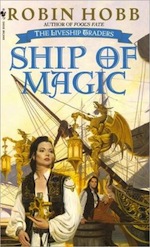
This trilogy takes the seafaring thing to a new level, as the ships are made of a magical wood, which renders them sentient. Ordinarily, they remain in families for generations, practically guaranteeing prosperity to their owners.
When Althea Vestrit comes of age, however, her liveship is sold off as a transport vessel for the hated slave trade. Althea has to gather a crew together to rescue her ship, and along the way faces sea serpents, baby dragons, and slave rebellions as she learns that the Liveships may have destinies of their own.
Pirates of the Caribbean series—Disney
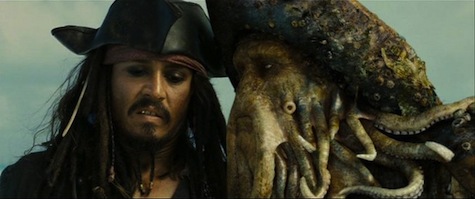
Though the series did eventually become as bloated and rickety as a Carnival Cruise-goer after their third Midnite Buffet, Curse of the Black Pearl is still fun, and there are still great flashes of wit in the second and third installments. Johnny Depp’s initial turn as Capt. Jack Sparrow was quirky and subversive, with enough hints of desperation, addiction, and queer-friendliness to make him one of the most interesting Disney characters ever. Orlando Bloom makes a great bland straight man, and Keira Knightley is a better pirate than both of them. Plus it made pirate movies cool again after Cutthroat Island had seemingly forced the genre to walk the plank forever.
To the Ends of the Earth—William Golding
Rites of Passage (1980), Close Quarters (1987), and Fire Down Below (1989).
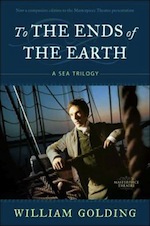
This is a trilogy by William “sucks to your assmar” Golding, so people spend most of the voyage reverting to the most hateful version of themselves, and savagery abounds. In 2006, the trilogy was was adapted into a mini-series starring Benedict Cumberbatch as the bitchy upper-class twit Edmund Talbot. Young Edmund’s roman is slowly bildunged over the course of a voyage from Britain to Australia, as the ship begins to fall apart and the crew members are all revealed to be more than they seem. Finally, after much vomiting and discussion of social mores, our hero begins to feel the first stirrings of love in various regions that proper Victorian gentlemen do not speak of, such as the heart.
The Cruel Sea—Nicholas Monsarrat
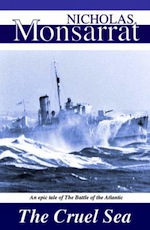
This 1951 novel written by Nicholas Monsarrat focuses on he lives of the crew of the HMS Compass Rose, an escort ship fighting in the Battle of the Atlantic, and was based on Monsarrat’s own experiences in the Royal Navy during World War II. Each chapter of the book covers a year of the war, as the seamen have to do their jobs and keep their morale up knowing that at any moment U-boats could torpedo them to shreds. Not so much a fun sea voyage, as much as a harrowing testimony to heroic sacrifice.
Black Sails—STARZ Original Series
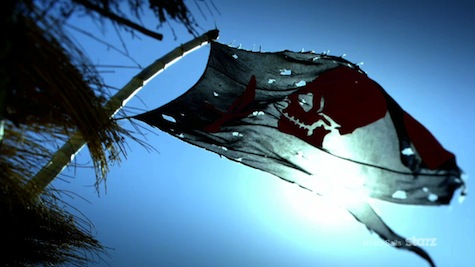
The Golden Age of serialized television meets the Golden Age of Piracy in Black Sails! A sort-of prequel to Treasure Island, the series follows pirates both fitional (Captain Flint, creator of the R.L. Stevenson’s famed treasure map) and only-slightly-historically-embellished (Charles Vane, Jack Rackham, Anne Bonny) as they fight for the freedom of New Providence Island, a pirate stronghold in the Bahamas. The show tries to dig into the realities of pirate life in between awesome battles, rather than just presenting sexy naval times, and it took 300 people to build the ships!
The Abyss—James Cameron, Director
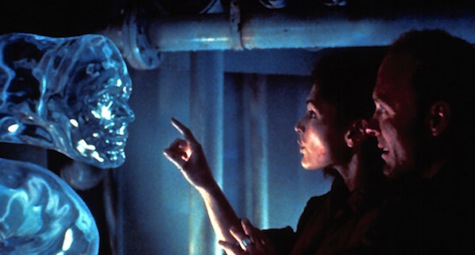
So we all know that James Cameron has a deep, and most likely unrequited, crush on the sea. After he made Titanic he spent many years developing special underwater cameras to explore the wreck of the Titanic more thoroughly than ever before. But prior to his contributions to science, he created The Abyss, a first-contact thriller where we discover the alien is already on earth. And it might also be God. Or the Devil? It’s unclear. The film features lots of shouted dialogue and a tortured love story between two people trapped on the bottom of the sea, and it’s a great time.
Aubrey-Maturin series—Patrick O’Brian
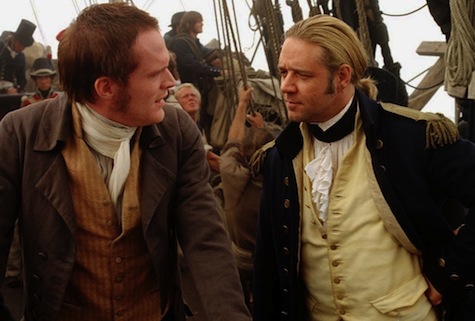
The 20 completed novels of Patrick O’Brian’s Aubrey-Maturin series tell an epic story with a powerful heart featuring the relationship between two men: Captain Jack Aubrey of the Royal Navy, and ship’s surgeon Stephen Maturin (who is also a secret agent). The books take place during the Napoleonic Wars, and range from the waters off of France to Brazil to the West Indies, digging into detail about life aboard a ship, as well as sprinkling colorful worldbuilding elements like Irish revolutionary theory, the work of Darwin, and the occasional hidden Gnostic cult. The film adaptation, starring Russell Crowe and Paul Bettany, draws from 13 of the O’Brian novels, with an emphasis on events from Far Side of the World.
Typhoon—Joseph Conrad
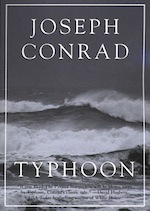
Begun in 1899 and serialized in Pall Mall magazine in spring of 1902, Typhoon is Joseph Conrad’s greatest seagoing adventure. It’s also possibly based on an early incident from Conrad’s early life.
Captain MacWhirr believes that the Siamese steamer Nan-Shan is an indomitable creation of man, and to prove that, he sails her right into a massive typhoon, disregarding the concerns – and possibly the lives – of the author’s own alter ego, Jukes, and the ship’s chief engineer, Solomon Rout. Will the crew live long enough to admit they admire MacWhirr’s tenacity? Or have they been doomed by one man’s foolhardy pride?
Dead Calm—Charles F. Williams
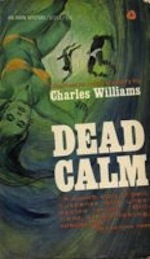
John and Rae Ingram are nineteen days out of the Panama Canal, sailing slowly across the wide, flat Pacific on the Saracen, when they rescue young Hughie Warriner, desperately trying to stay afloat in a life raft. He claims that he’s the sole survivor of a yacht called the Orpheus, and that his companions all died of food poisoning. When John insists on searching he Orpheus he finds Hughie’s companions, very much alive, and not too happy with being left to die. However, when John tries to return to his wife, he realizes that Hughie has taken off in his boat.
This pulp classic by the long-neglected noir writer Charles F. Williams melds elements of a revenge tragedy, a cat-and-mouse style chase, and some operatic high-Freudian psychological analysis into an unconventional thriller. The film adaptation stars Nicole Kidman and Sam Neill as the married couple, and a fabulously shirtless unhinged Billy Zane as Hughie, and much scenery chewing ensues.
Child of a Hidden Sea—A.M. Dellamonica
Frequent Tor.com contributor Alyx Dellamonica takes us to a seafaring world of intrigue and destiny! One minute, twenty-four-year-old Sophie Hansa is in a San Francisco alley trying to save the life of the aunt she has never known. The next, she finds herself flung into the warm and salty waters of an unfamiliar world known as Stormwrack.
Sophie doesn’t know it yet, but she has just stepped into the middle of a political firestorm, and a conspiracy that could destroy a world she has just discovered. With the help of a sister she has never known, and a ship captain who would rather she had never arrived, she must navigate the highly charged politics of Stormwrack, and win the right to decide for herself whether she stays in this wondrous world.










